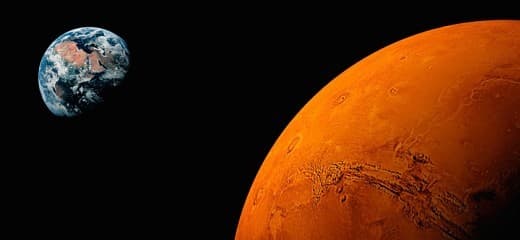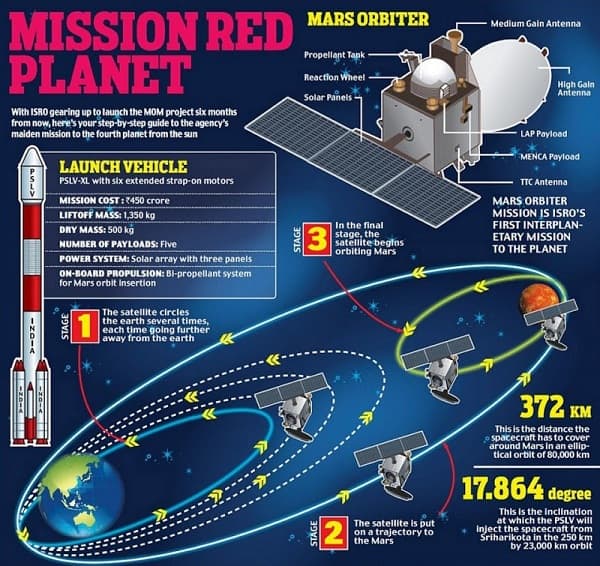ISRO's 'Mangalyaan' Mars Orbiter Mission Approaches October Launch
The 450 crore Mars mission is the most ambitious endeavor yet in India's Space Research history, and expectedly the most complex too. If ISRO becomes successful in this crucial mission, then India will distinguish itself as the first Asian nation to have probed the Red Planet. Even though America and Russia have preceded in explorations of Mars, it is remarkable how swiftly ISRO has progressed after making its first Moon probe only five years ago. The date for the launch has been set in October, with all efforts put into the integration and testing of the spacecraft currently. Chandrayaan-I, the lunar probe launched by ISRO in October 2008, involved much simpler technology when compared to the Mars Orbiter. For one, Chandrayaan-I remained within Earth's orbit. While, in the case of the Mangalyaan, which has to travel to a planet 400 million km away, the probe has to plan for a more extensive route. From the geocentric phase where it will be within Earth's orbit to the heliocentric phase in 10 months, the probe will eventually position itself into the Mars-centric phase. Keeping in mind the elliptical orbit of Mars, the closest the planet comes to Earth is still 54.6 million km away. But it does so only once in 26 months, and such a window presents itself in November this year. Under any unfortunate circumstances that the orbiter is unable to complete its mission this year, the next opportune window will come no sooner than 2016.

Other factors also contribute to the intricacy of this mission. For example, if the rover is sent too early, it will be exposed to harmful radiation that could hamper its life and efficiency. To send it too late will minimize the probe's chances of placing itself into the Martian orbit. The rocket is hence scheduled to launch at October 22, consequently dropping out of Earth's orbit on November 26 and finally entering the Martian orbit on September 21, 2014. The payload consists of five scientific instruments that will orbit around 370km above the planet with the purpose of observing and collecting data. The Mars Colour Camera will take pictures with Infrared Imaging Spectrometer to map the surface composition and mineralogy. The Martian Exospheric Composition Explorer will study the upper atmosphere while the Alpha Photometer will analyse the ratio of hydrogen to deuterium in the atmosphere. Lastly, but probably of utmost importance, the Methane Sensor will check for the presence of methane (an indicator of life) and its source. For people born way ahead of 1969, who weren't witness to the Moon landing or what is fondly remembered as the Space Age should be excited at the increasing focus on Space Research and especially at the prospect of Mars exploration. Maybe, we'll see a landing in our lifetime, after all.

Source: #-Link-Snipped-#

Other factors also contribute to the intricacy of this mission. For example, if the rover is sent too early, it will be exposed to harmful radiation that could hamper its life and efficiency. To send it too late will minimize the probe's chances of placing itself into the Martian orbit. The rocket is hence scheduled to launch at October 22, consequently dropping out of Earth's orbit on November 26 and finally entering the Martian orbit on September 21, 2014. The payload consists of five scientific instruments that will orbit around 370km above the planet with the purpose of observing and collecting data. The Mars Colour Camera will take pictures with Infrared Imaging Spectrometer to map the surface composition and mineralogy. The Martian Exospheric Composition Explorer will study the upper atmosphere while the Alpha Photometer will analyse the ratio of hydrogen to deuterium in the atmosphere. Lastly, but probably of utmost importance, the Methane Sensor will check for the presence of methane (an indicator of life) and its source. For people born way ahead of 1969, who weren't witness to the Moon landing or what is fondly remembered as the Space Age should be excited at the increasing focus on Space Research and especially at the prospect of Mars exploration. Maybe, we'll see a landing in our lifetime, after all.

Source: #-Link-Snipped-#
0
